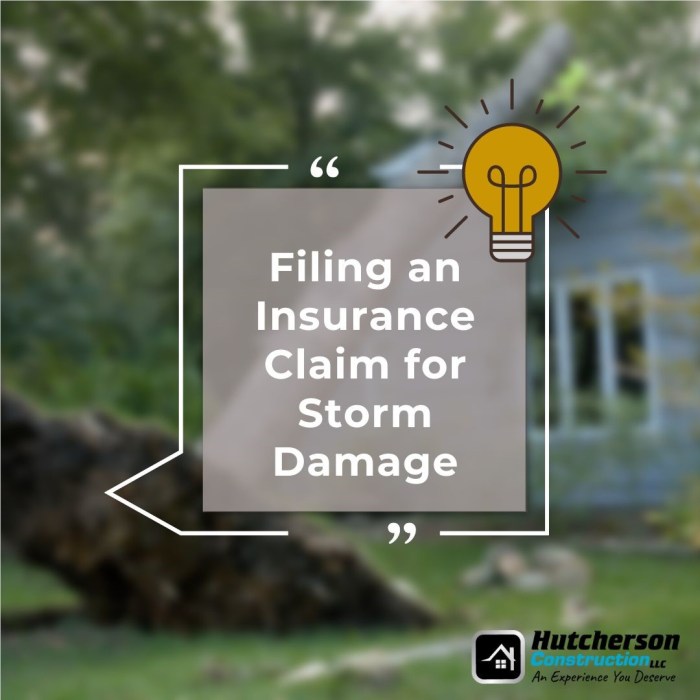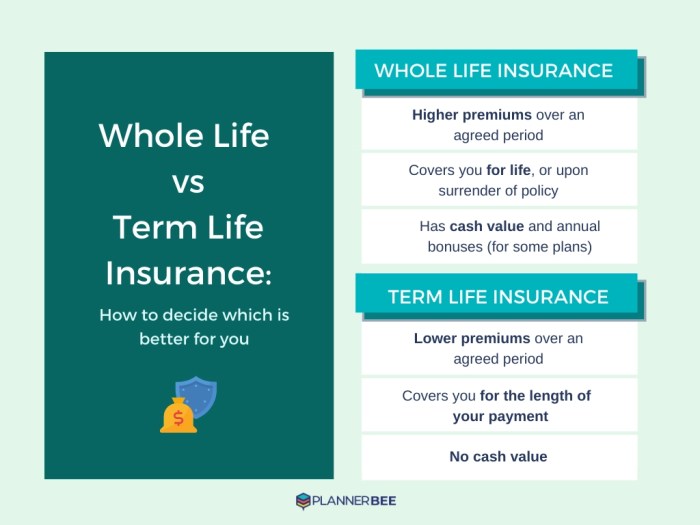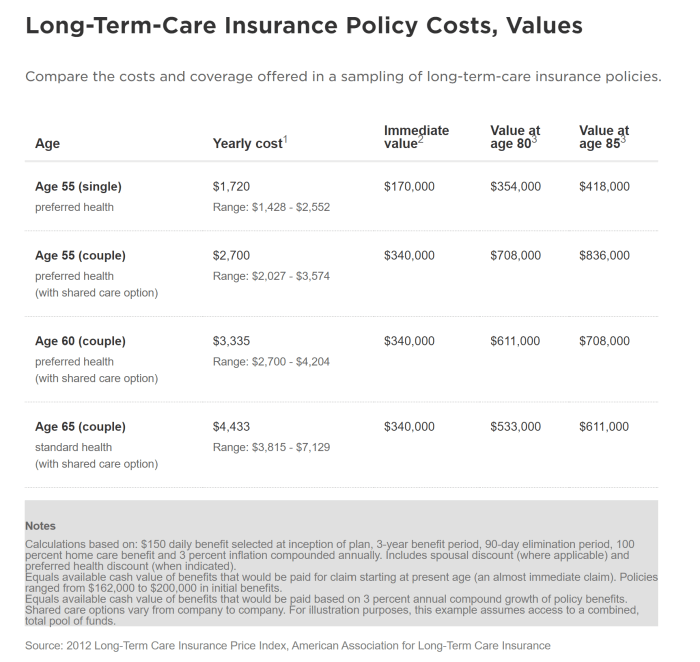Determining Liability in a Car Accident
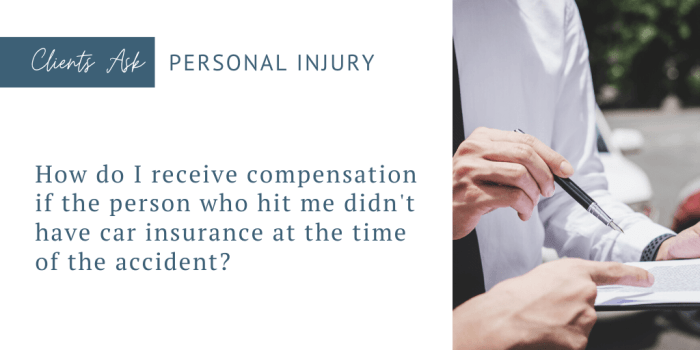
If i crash someone else’s car whose insurance covers it – Determining who is at fault in a car accident is crucial for insurance claims and potential legal action. Liability is assigned based on a careful assessment of the circumstances surrounding the collision. Several factors contribute to this determination, and the process can be straightforward in some cases, while highly contested in others.
Factors Considered in Assigning Liability
Liability in a car accident is determined by investigating the actions of each driver leading up to the collision. This involves examining evidence to establish negligence or fault. Key factors include witness testimonies, the police report (if one exists), and physical evidence from the accident scene. Each piece of evidence carries different weight depending on its reliability and corroboration with other evidence.
For example, a dashcam recording offering clear footage of the accident would generally hold more weight than a single, potentially biased, witness statement.
Examples of Clear and Contested Liability
In some accidents, liability is clear-cut. For instance, if Driver A runs a red light and collides with Driver B, who had a green light and was proceeding lawfully, Driver A is almost certainly liable. Conversely, contested liability often arises in situations with multiple contributing factors or unclear evidence. Consider a scenario where both drivers were speeding and one swerved to avoid an obstacle, resulting in a collision.
Determining fault in this instance becomes significantly more complex and may require a detailed investigation to assess the degree of each driver’s negligence. Another example would be a rear-end collision where the driver in front braked suddenly without signaling. While the rear driver may be partially at fault for following too closely, the lead driver’s actions could also contribute to the accident.
Types of Evidence and Their Impact on Liability
The following table summarizes different types of evidence and their potential influence on determining liability:
| Type of Evidence | Impact on Liability Determination | Example | Reliability |
|---|---|---|---|
| Witness Statements | Can support or refute claims of negligence; however, biases can affect reliability. | A witness stating that one driver ran a stop sign. | Moderate; subject to individual biases and memory inaccuracies. |
| Police Report | Provides an official record of the accident, including diagrams, witness accounts, and officer observations. | A police report detailing the accident scene, including statements from both drivers and witnesses. | High; considered official documentation but can still contain inaccuracies. |
| Vehicle Damage Assessment | Analysis of vehicle damage can help reconstruct the accident and suggest the sequence of events. | Damage patterns suggesting a side impact versus a rear-end collision. | High; objective assessment, but interpretation may be subjective. |
| Dashcam Footage | Provides irrefutable visual evidence of the events leading up to and including the accident. | Video clearly showing one driver failing to yield the right of way. | Very High; provides objective, visual documentation of the events. |
Understanding Insurance Coverage: If I Crash Someone Else’s Car Whose Insurance Covers It
So you’ve been in an accident. Now what? Understanding your car insurance coverage is crucial, especially if you’re involved in a collision that damages someone else’s vehicle. This section breaks down the different types of coverage and how they apply in accident scenarios.Knowing the specifics of your insurance policy can significantly reduce stress and confusion during a potentially difficult time.
It’s vital to understand what your policy covers and, equally important, what it doesn’t.
Liability Coverage
Liability coverage is the most important type of car insurance. It pays for the damages you cause to other people or their property when you’re at fault in an accident. This includes medical bills for injuries you cause to others, repairs to their vehicles, and potentially even property damage beyond just cars. The amount of coverage is usually expressed as two numbers, like 25/50/25, representing bodily injury liability per person ($25,000), bodily injury liability per accident ($50,000), and property damage liability ($25,000).
These limits are set by you when you purchase your policy.
Examples of Liability Coverage in Action
Here are a few scenarios where liability insurance would cover damages to another person’s car:* Scenario 1: You run a red light and hit another car, causing $5,000 in damage. Your liability coverage would pay for the repairs, assuming your coverage limit is higher than $5,000.
Scenario 2
You back into a parked car in a parking lot, causing $2,000 in damage. Again, your liability coverage would take care of the repairs, provided your coverage limit exceeds the damage amount.
Scenario 3
You are involved in a multi-car accident where you are deemed at fault, causing damage to three other vehicles, totaling $12,000. Your liability coverage would pay for the damages, as long as your policy’s property damage liability limit is at least $12,000. If the damage exceeds your coverage limit, you would be personally responsible for the difference.
Other Types of Car Insurance Coverage
While liability insurance is essential for covering damages you cause to others, other types of coverage protect you and your vehicle:* Collision Coverage: Pays for repairs to your car, regardless of fault. This is important even if you’re not at fault, as the other driver’s insurance may not cover all damages.
Comprehensive Coverage
Covers damage to your car caused by events other than collisions, such as theft, vandalism, or hail damage.
Uninsured/Underinsured Motorist Coverage
Protects you if you’re involved in an accident with an uninsured or underinsured driver. It covers your medical bills and vehicle repairs.
Medical Payments Coverage
Pays for your medical expenses, regardless of fault, up to the policy limit.
Claims Process Flowchart
A simple illustration of a claims process between two insured drivers could be represented as follows:[Imagine a flowchart here. The flowchart would start with “Accident Occurs.” It would branch to “Police Report Filed?” (Yes/No). If yes, it leads to “Exchange Information with Other Driver.” If no, it still leads to “Exchange Information with Other Driver.” Both paths then lead to “Contact Your Insurance Company.” This then leads to “Insurance Company Investigates.” Then, to “Settlement Reached or Litigation Begins”.]The flowchart visually represents the typical steps involved: reporting the accident, exchanging information, contacting insurance companies, investigation, and finally, reaching a settlement or potentially going to litigation.
The specifics can vary depending on the insurance company and the details of the accident.
The Role of Uninsured/Underinsured Motorist Coverage
Uninsured/underinsured motorist (UM/UIM) coverage is a crucial part of your car insurance policy, often overlooked until it’s desperately needed. It acts as a safety net, protecting you and your passengers from financial ruin in the event you’re involved in an accident caused by a driver who lacks sufficient insurance or has no insurance at all. Essentially, it steps in where the at-fault driver’s insurance falls short.This coverage protects you financially by covering medical bills, lost wages, and vehicle repair or replacement costs resulting from an accident caused by an uninsured or underinsured driver.
It’s important to note that UM/UIM coverage only applies when you are not at fault. Your own insurance company will handle the claim, making the process smoother than dealing directly with an uninsured driver or their insolvent insurance company.
UM/UIM Coverage in Action
Imagine this: you’re stopped at a red light when another car rear-ends you. The other driver admits fault, but then reveals they have no insurance. Without UM/UIM coverage, you’re responsible for all the repair costs to your vehicle, your medical bills, and any lost wages. However, with UM/UIM coverage, your insurance company will cover these expenses, up to your policy limits.
This is where the real value of this often-underestimated coverage shines through. It provides a level of financial security and peace of mind that is priceless.
Situations Benefiting from UM/UIM Coverage
It’s important to understand the various situations where having UM/UIM coverage is highly beneficial. The peace of mind it offers is significant.
- An accident with a hit-and-run driver. The at-fault driver flees the scene, leaving you with no way to pursue a claim against them. UM/UIM coverage would cover your damages.
- A collision with a driver whose insurance policy has insufficient coverage to cover your losses. Perhaps your medical bills and vehicle repairs exceed the other driver’s liability limits. UM/UIM coverage would cover the difference.
- An accident involving an uninsured driver who is at fault. This is a common scenario where UM/UIM coverage is essential.
- Injuries sustained in an accident caused by an underinsured driver resulting in significant medical expenses and lost wages. The at-fault driver’s insurance may only cover a portion of your losses, leaving UM/UIM to cover the rest.
- Damage to your vehicle exceeding the other driver’s liability limits. Your car may be totaled, but the other driver’s insurance doesn’t cover the full replacement cost. UM/UIM would bridge that gap.
Collision Coverage and Deductibles
Collision coverage is a vital part of your car insurance policy, protecting you financially in the event of an accident, regardless of who’s at fault. It covers damage to your vehicle caused by a collision with another vehicle or object, such as a tree or a building. This means that even if you cause the accident, your insurance will help pay for the repairs to your car.
Understanding how collision coverage works, particularly in relation to your deductible, is crucial for managing the costs associated with vehicle damage.Collision coverage helps pay for repairs or replacement of your vehicle after a collision. It’s important to remember that collision coverage is separate from liability coverage, which covers the other person’s damages and injuries if you are at fault.
Your collision coverage kicks in to cover your own vehicle’s damage, regardless of fault. The amount your insurance company pays depends on your deductible.
Deductibles and Their Impact on Repair Costs
Your deductible is the amount of money you agree to pay out-of-pocket before your insurance coverage begins to pay. For example, if you have a $500 deductible and your car repairs cost $2,000, you would pay the first $500, and your insurance would pay the remaining $1,500. Higher deductibles generally mean lower insurance premiums (the amount you pay for your insurance policy), while lower deductibles mean higher premiums.
Choosing the right deductible depends on your financial situation and risk tolerance. A higher deductible is suitable for those comfortable paying a larger amount upfront in exchange for lower premiums, while a lower deductible provides more immediate financial protection.
Collision Coverage vs. Liability Coverage
Collision coverage and liability coverage are distinct parts of your car insurance policy, addressing different aspects of accident-related costs. Liability coverage protects you against financial responsibility for injuries or damages you cause to others in an accident. If you’re at fault, your liability coverage will help pay for the other person’s medical bills, vehicle repairs, and other related expenses.
However, liability coverage doesnot* pay for repairs to your own vehicle. That’s where collision coverage comes in. It covers damages to your car, regardless of who is at fault. Having both collision and liability coverage offers comprehensive protection in various accident scenarios.
Illustrative Example of Deductible and Repair Costs
The following table demonstrates how different deductible amounts affect your out-of-pocket expenses for various repair estimates.
| Repair Estimate | $500 Deductible | $1000 Deductible | $1500 Deductible |
|---|---|---|---|
| $1,000 | $500 | $0 | $0 |
| $2,000 | $500 | $1,000 | $500 |
| $3,000 | $500 | $1,000 | $1,500 |
| $5,000 | $500 | $1,000 | $1,500 |
Dealing with Insurance Companies
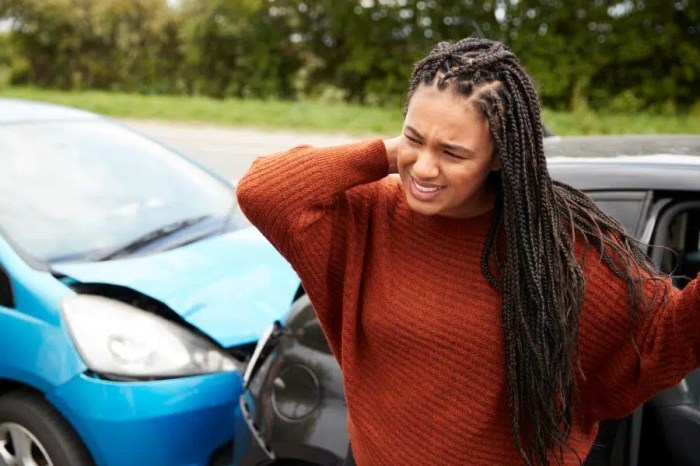
Navigating the insurance claim process after a car accident can feel overwhelming, but understanding the steps involved can significantly ease the stress. This section will guide you through interacting with your insurance company, from filing a claim to resolving disagreements. Remember, accurate and thorough documentation is key throughout the entire process.Filing a Claim with Your Insurance CompanyAfter a car accident, promptly reporting the incident to your insurance company is crucial.
This usually involves contacting them by phone and providing basic details such as the date, time, location, and involved parties. You’ll likely be given a claim number and assigned an adjuster. The adjuster will be your main point of contact throughout the claims process. Be prepared to provide them with detailed information about the accident, including police reports, witness statements, and photos of the damage.
Your insurer will have specific forms you need to complete. Follow their instructions carefully and submit all requested information in a timely manner. Keep copies of everything you submit.
Communicating with Insurance Adjusters
Effective communication is vital for a smooth claims process. When speaking with an adjuster, be clear, concise, and factual. Avoid speculation or emotional language. Keep a record of all conversations, including the date, time, and name of the adjuster, along with a summary of what was discussed. If you have questions, write them down before calling to ensure you address everything.
Be polite but firm in your interactions. If you disagree with anything, state your concerns calmly and clearly, providing evidence to support your position. Always obtain written confirmation of any agreements made.
Gathering and Presenting Evidence
Strong evidence is crucial for supporting your claim. This includes photographs of the damage to all vehicles involved, the accident scene, and any visible injuries. Obtain contact information from witnesses and document their accounts of the accident. The police report, if one was filed, is vital evidence. If you have dashcam footage or security camera recordings, provide copies to your adjuster.
Medical records documenting injuries sustained in the accident should also be submitted. Organize all your evidence clearly and systematically. Consider creating a chronological timeline of events surrounding the accident.
Handling Disagreements with Insurance Companies
Disagreements over liability or claim amounts can arise. If you believe your insurer’s assessment is unfair, review your policy carefully to understand your coverage. If the disagreement persists, consider seeking advice from an independent insurance professional or a lawyer. Keep detailed records of all communication and attempts to resolve the issue. Many states have laws that allow for arbitration or mediation to help resolve insurance disputes outside of court.
Explore these options if necessary. Remember, remaining calm and professional throughout the process is essential, even when dealing with frustrating situations.
Legal Implications and Potential Costs
Even if your insurance company handles the immediate aftermath of an accident, the legal ramifications and financial burden can extend far beyond the initial claim. Disputes over liability, especially when injuries are involved, can lead to lengthy and costly legal battles. Understanding the potential costs associated with legal representation, medical expenses, and vehicle repairs is crucial for protecting yourself financially and legally.Legal action might become necessary in several situations.
For example, if the other driver’s insurance company denies liability, refuses a fair settlement, or if your injuries result in significant medical bills and lost wages exceeding the insurance coverage. In cases of serious injury or wrongful death, a lawsuit might be the only recourse to obtain just compensation.
Potential Legal Ramifications, If i crash someone else’s car whose insurance covers it
Disputes over fault can lead to lengthy investigations and court proceedings. If you are found liable, you could face significant financial penalties, including paying for the other driver’s vehicle repairs, medical expenses, lost wages, and pain and suffering. In cases involving serious injuries, criminal charges such as reckless driving or driving under the influence could also be filed, leading to fines, jail time, and a permanent criminal record.
Even if you’re not found at fault, defending yourself in court can be expensive and time-consuming. For instance, a minor disagreement about who caused the accident could escalate into a lawsuit costing thousands of dollars in legal fees, even if the case is eventually dismissed.
Financial Costs Associated with Accidents
The financial consequences of a car accident can be substantial. Medical bills, even for seemingly minor injuries, can quickly accumulate. Repairs to your vehicle, especially if it’s significantly damaged, can also be expensive. Legal representation is often necessary to navigate the complexities of insurance claims and potential lawsuits. The costs associated with hiring a lawyer can range from a few thousand dollars to tens of thousands, depending on the complexity of the case and the amount of damages involved.
Consider a hypothetical scenario: a fender bender results in $5,000 in vehicle repairs and $10,000 in medical bills for the other driver. If the at-fault driver’s insurance company disputes liability, the cost of legal representation could easily add another $5,000 to $10,000, potentially exceeding the initial cost of damages.
Scenarios Requiring Legal Action
Legal action may be necessary if the other driver’s insurance company denies your claim, offers an unreasonably low settlement, or if you sustain serious injuries requiring extensive medical treatment and rehabilitation. If the other driver is uninsured or underinsured, legal action might be your only recourse to recover compensation for your losses. Furthermore, if the accident involved a fatality, a wrongful death lawsuit may be filed to recover damages for the victim’s family.
Actions to Protect Your Legal Rights After an Accident
It’s critical to take immediate steps to protect your legal rights following a car accident. Failing to do so could significantly weaken your position in any subsequent legal proceedings.
- Call the police and report the accident, obtaining a police report number.
- Gather information from all parties involved, including driver’s licenses, insurance information, and contact details.
- Take photographs and videos of the accident scene, including damage to vehicles, and any visible injuries.
- Seek medical attention, even if your injuries seem minor. Document all medical treatments and expenses.
- Contact your insurance company promptly and report the accident.
- Do not admit fault at the scene of the accident or in any statements to the insurance company.
- Keep detailed records of all communication with insurance companies and any legal professionals.
- Consult with an attorney experienced in personal injury law to discuss your legal options and rights.

